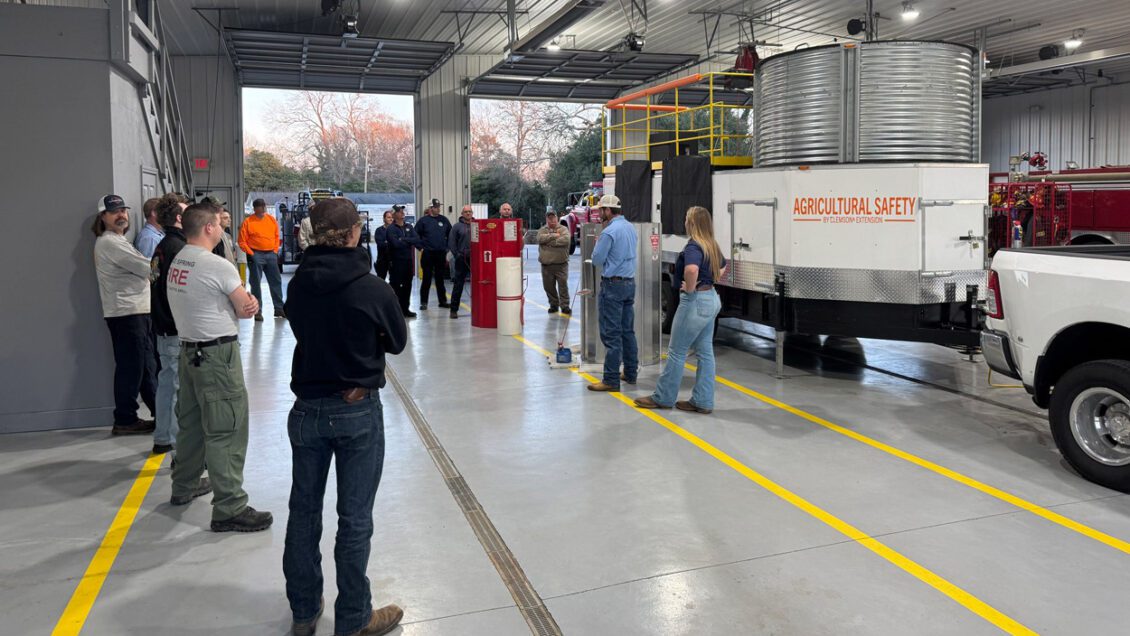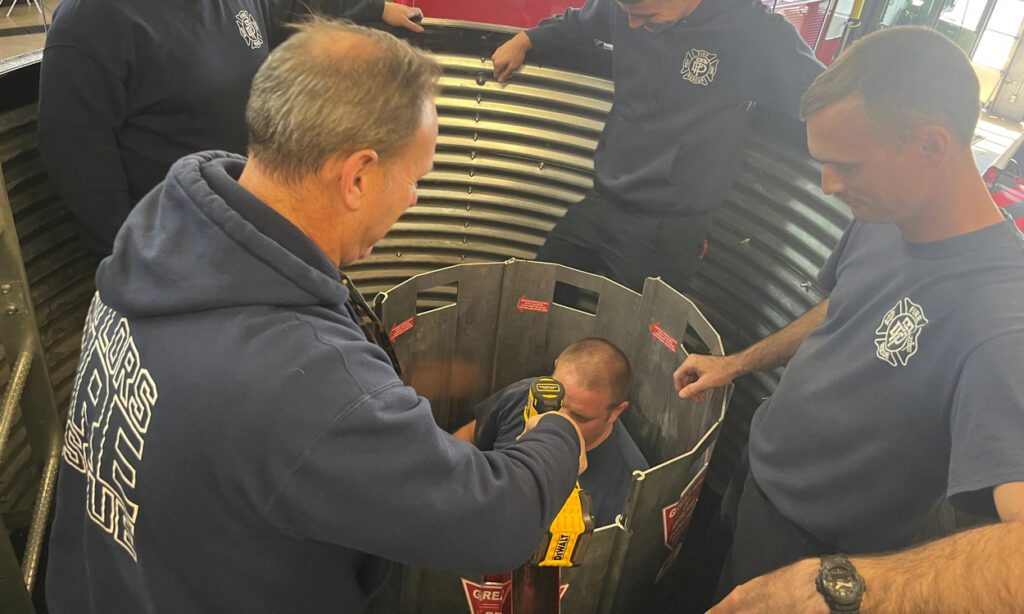
As Hunter Massey, a principal lecturer in Clemson University’s Agriculture Sciences Department, put it, it’s rare that he and Shelley Lovern, agricultural safety/AgrAbility associate at Clemson, get an opportunity to measure their work’s importance when it comes to agriculture safety due to the lack of measurable data.
But a recent safety training conducted by Lovern was a little different. In November, Lovern trained members of the Dillon County fire and rescue team. Lovern went through multiple iterations of how to rescue someone trapped in a grain bin using rescue panels. It just so happened Dillon County had just acquired some panels like the ones Lovern uses with Clemson’s training simulator.
Two months later, Lovern received a call that the Dillon County fire and rescue team was trying to rescue a man trapped in a grain bin, but didn’t have enough rescue panels. Lovern and Massey called around the state before locating panels at the Howe Springs fire department.
The panels connect and are used to form a circle around the victim. An auger is then used to remove the grain from around the individual.

Once safely removed, the man was airlifted to the hospital in Florence for precautionary measures before being released that night, Lovern said.
“When it happened, I told Shelley, ‘We didn’t deserve any credit,’” Massey said. “We just provided a prop and it helped. It does make you feel good, the fact that what you did made a difference. People will go a whole career, or lifetime, and you can’t quantify that you made a difference. But we did on one day. It really solidifies the importance of what we’re doing.”
Thomas Dobbins, director of Clemson Cooperative Extension Service and senior associate dean of outreach and engagement, added, “It’s programs like this that makes one realize that the work we do in Extension is important to the community we serve.”
While Lovern and Massey were pleased to learn their training had an impact in saving a life, the incident made them realize more needed to be done. Since the incident, they have been working on developing a state map featuring all the locations with rescue devices and how to contact them.
“Dispatchers should have this map,” Massey said. “They should’ve never called us. They did and it worked out. Thank God it did. We’re a delay that should never exist. We’re working to take that delay out.”
Lovern said the number of calls seeking trainings have increased since the rescue. A lot of the requests have come from the Pee Dee region where a lot of the state’s row crops are located.
Clemson’s simulator, which is one of about four in the country according to Lovern and Massey, was developed in-house by students, faculty and staff. The idea arose in 2019 from former student Jacob Koch, who had an internship with a large grain handling company and was adamant about grain safety.

“I thought it was a little too big and the cost was a big issue,” Massey said.
But during COVID, when agricultural safety events such as high school field days and outreach to kids were canceled, the department had available reoccurring state dollars that needed to be spent. They took that opportunity to build the grain bin simulator. Farm Bureau and various other outside agencies also donated funds. The project was a joint effort between the Clemson Cooperative Extension Service and the Agricultural Sciences Department.
“We’re able to take the simulator all across the state and into North Carolina and Georgia to provide trainings for fire and rescue team members so we can simulate the entire rescue process,” Lovern said. “If you have a victim that is entrapped in grain, you can use the rescue panels to safely remove them from the grain.”
Lovern said there are about 1-2 such occurrences in South Carolina each year. The Dillon County training was one of roughly 100 trainings they have conducted with the simulator since August of 2023 when Lovern joined the team after completing her master’s in agriculture from Clemson.
“I spend a lot of time in hotel rooms, kind of in the middle of nowhere,” Lovern said. “It was very rewarding to see it all have a positive outcome. It made it worth driving four hours there and four hours back in one day.”
Cullen Bryant, a 77-year-old retired farmer from Dillon County, is one who spent many years advocating for more safety training and rescue equipment in rural areas. He was grateful for the training Dillon County’s fire and rescue team had with Clemson last fall. The victim was a neighbor and lifelong friend of Bryant’s.
“Most people, until they actually see that there’s a need, it stays in the background,” Bryant said. “There’s more grain bins that are being put up on farm storage and there’s a lack of knowledge of the danger, in my opinion, with employees, farmers, etc. Real-life consequences can happen. I’ve had some friends who have lost loved ones, and a friend who got mangled up pretty bad a few years ago down near Aiken.”
Bryant was involved with an expo in Florence many years ago and witnessed a grain bin demonstration. “I learned an awful lot there,” he said. “It was an eye-opener to me as to what to do, what not to do and how dangerous grain can be.”
Among the things he learned:
- Once you are waist deep in grain, you can no longer be pulled out by your arms.
- If submerged in the grain, it gets in your nose and blocks your breathing. And when you open your mouth, it fills with grain.
- If you have a cap or a shirt, put it over your face to block the grain from getting in your nostrils or mouth, which could buy some extra time during a rescue.
“I’m so glad to see Clemson has taken on the training and is going around and training different departments around the state,” Bryant said. “I think that’s awesome.”
Get in touch and we will connect you with the author or another expert.
Or email us at news@clemson.edu
